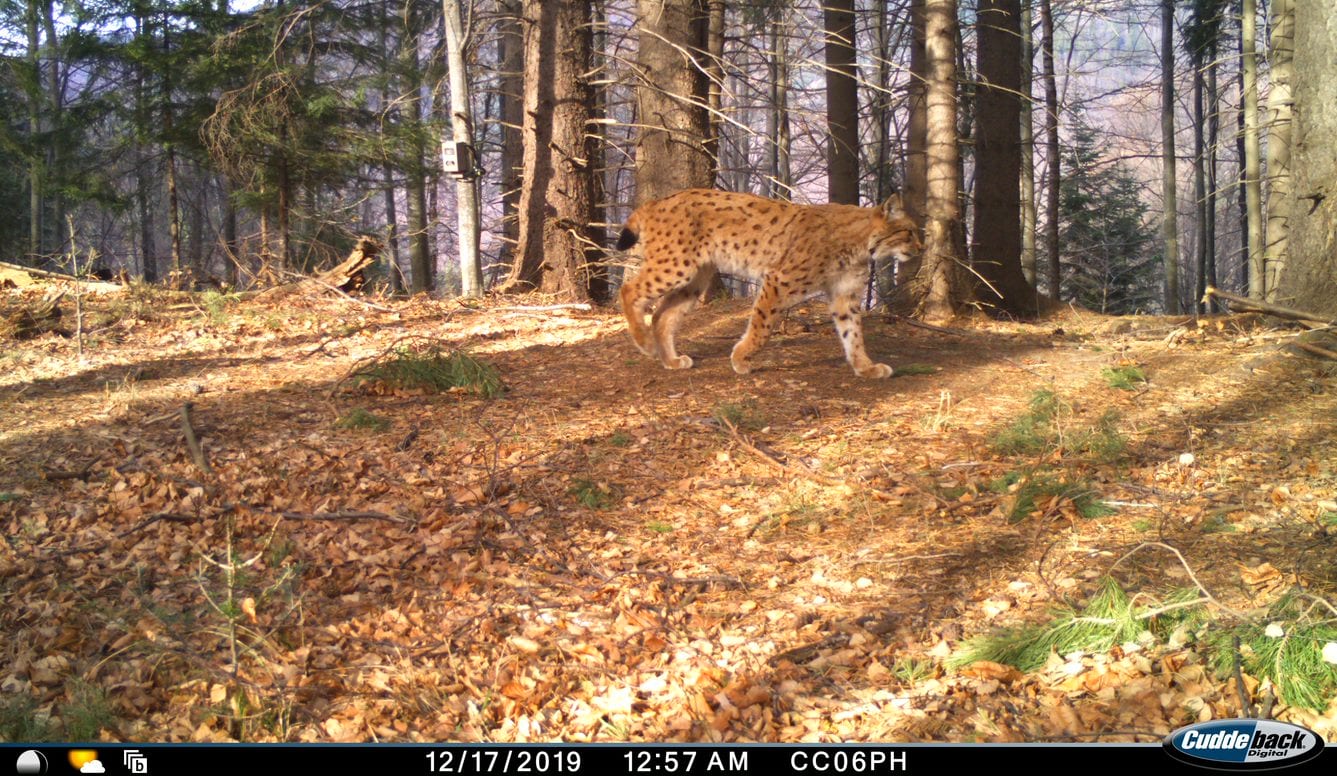We have successfully completed the first scientific, quantitative monitoring programme of the European lynx (Lynx lynx) in a pilot area in the Southern Carpathians. The monitoring was done with the help of camera traps with motion sensors and aims to assess the state of conservation and maintain a viable population of lynx, as well as creating a model for monitoring wildlife at the national level.
The specialists of the foundation monitored the largest wild cat in Europe, in a pilot area of 1200 km² (300,000 acres) in the eastern Făgăraș, Piatra Craiului and Leaota Mountains. A total of 23 adult lynx, nine males, six females, eight individuals with undetermined sex, as well as nine kittens accompanying the females were identified using the 152 camera traps installed.
The data were obtained during three consecutive autumn-winter seasons, from 2018 to 2020, with a duration of up to 105 days of monitoring in each season.
How were the lynx monitored?
Traditionally, in Romania the monitoring of large carnivores is done by counting the tracks found on the snow. However, the lynx move around a lot, making it impossible to trace a certain specimen, leaving the risk that the same animal will be counted several times. This has happened in Romania, especially during the period when hunting quotas were allowed for this species.
To eliminate these uncertainties, we used a modern method of monitoring, without capturing and disturbing the normal behaviour of the animal. Monitoring with cameras with infrared motion sensors involves photographing the lynx in their natural habitat and the specialists can then identify the lynx based on the images obtained. This method is effective in studying populations of cats whose fur has a unique pattern from individual to individual. Based on the number of recaptures of each individual, we estimated the size, density and structure of the population in the pilot area, using complex mathematical models that take into account immigration, mortality, behaviour and habitat availability. Population size assessment is essential to implement sustainable management of this shy species in the Romanian Carpathians. Such data show us whether the population maintains an upward or downward trend in the context of habitat changes, diminishment of food resources and so on.
Mathematical models predict a density of 1.7 lynx/ 100 km2 (confidence interval = 1.1-2.6). These density values of the lynx population are slightly higher than those of the Slovakia Carpathians, Swiss Alps or Jura Mountains on the border between France, Switzerland and Germany.
Video: https://www.youtube.com/watch?v=yuem0kfua-g&feature=youtu.be
“The lynx monitoring of the eastern Făgăraș Mountains is the first example of modern, quantitative monitoring of this species in our country, and represents a good example of a monitoring scheme applicable in several pilot areas by a few Carpathian Mountains students,” said Ruben Iosif, wildlife specialist at Conservation Carpathia. “Only with such information can we advance in the management of the lynx in Romania, through measures to ensure the quiet areas and space that this species requires, in the context of habitat fragmentation. If we keep this population viable in the long run, we will keep the entire carnivore community intact, including their prey species (Roe deer, Red deer, black goat, etc.) throughout the European continent. Why? Because the populations in Romania are an important source of genes for other endangered populations, such as those in Central and Western Europe, both through natural recolonization and recent reintroduction programs.” The full monitoring report is available HERE, Appendix 1 and Appendix 2.
About lynx
The lynx is on the list of animals strictly protected by the Habitats Directive of the European Union, it is the third largest predator in Europe, after the bear and wolf with which it competes for their prey species: deer or black goat. It is a very discreet carnivore that avoids contact with humans. It does not attack domestic animals, occurs discreetly in forest habitats and only approaches the local communities around the Carpathians at night.
Lynx are territorial animals that roam across areas of up to 400 km², so they need continuously forested areas to survive, a condition that is increasingly difficult to ensure. During the winter, when heavy snow forces all animals to lower altitudes, the lynx and their prey depend on the ecosystems created by traditional agriculture around the Carpathian Mountains. And here comes the particularity of Romania, because these areas, these mosaics of meadows, orchards and patches of forest, are not yet fully anthropized and fragmented, giving space to these animals.
The biggest threats to lynx in Romania are the fragmentation and degradation of their natural habitats, the lack of management based on scientific methods, the excessive hunting of its prey species, and poaching. Like other large carnivores, namely bear and wolf, lynx is an indicator of a healthy and balanced ecosystem. Maintaining a viable and healthy population of lynx is part of maintaining a healthy forest, where there are both large carnivores and their species of prey.
